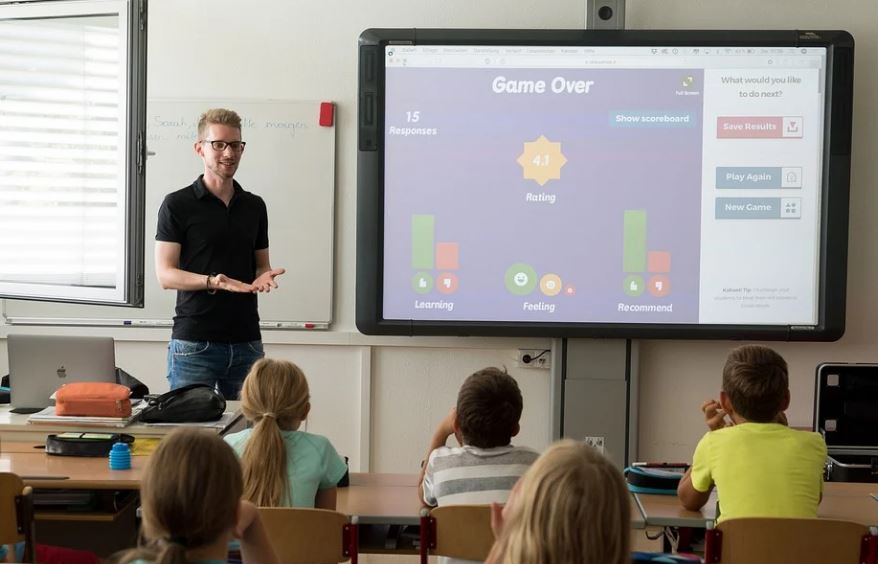Whether it’s elementary or middle school, using technology in the classroom is a powerful way to develop 21st-century skills. As McKinsey observed about a PISA research, students in the US who used a device in their classroom experienced almost a half-year learning improvement.

Some of the common ways to introduce learners to technology is through WebQuests and virtual field trips. However, they are not as impactful as integrating technology in the everyday learning process.
If you’re looking for innovative ways of introducing technology in the classroom, here are the top five technologies to try.
1. Learning Management Systems (LMS)
It refers to an internet-based software platform for planning, tracking, reporting, implementing, automation, and delivery of educational material. Students can sign in to the platform to access learning courses and training and development programs.
It’s one of the best ways of using tech in the classroom as you can connect thousands of learners. That’s why LMS educational technology works best as an online learning platform–because of its comprehensive technology integration.
The options with this new technology are endless–guide students, share lessons, learning resources, and digital textbooks. This use of technology even allows collaboration between students, and you can send assignments and grades online.
Online platforms allow you to apply different pedagogy, such as a flipped classroom. That way, you can give classroom instruction for solving at home, or create feedback loops like a live poll.
2. Interactive whiteboards and student response systems
These are pretty similar to traditional blackboards, except the board is now a display screen or projected image. The display could be a touchscreen computer while the projector utilizes a touchpad to control the projected content.
This is a win for the students because the platform allows incorporation of vivid visual images, creating an immersive experience. Students also get to participate in interactive classroom activities by sending feedback, enhancing student engagement.
You as a teacher can access the internet to provide seamless integration between digital devices. That means you can quickly seek examples from the internet to provide better illustration for the students’ understanding. In addition, you can work on your class presentation offsite and access it the following day at work.
3. Digital signage
If the classroom does not have an interactive projector or whiteboard, digital signage is the way to go. It refers to screens, projections, or video walls used to display dynamic digital content, such as images and videos.
You can create content that students want to see, like achievements, lesson plans, and displaying outstanding student work. Additionally, you can change content anytime, wherever you are.
If your school takes a dim view on students’ social media usage, digital signage could be the compromise solution. You can use it in a good way by displaying school communication such as:
- Twitter to announce real time breaking news or display weather updates
- Facebook to schedule and plan events, such as open days
- Instagram to display awesome photos and videos of events
4. Portable devices
Smartphones, laptops, and tablet computers are no longer unwanted distractions in the classroom. They present the easiest and most cost-effective way of using technology in the classroom since almost every student has one.
Have students interact in a classroom online group or take videos and photos of class projects for quick comparisons. You don’t have to meet in school for a round of fruitful classroom interactions.
In addition, students have portable devices all the time so you can use them to communicate whenever you wish. For instance, you could send text messages to communicate with students who are offline. When online, you can communicate through other medium such as WhatsApp, Google Hangouts, or Skype.
5. Game-based learning and assessment
As one of the newest techniques, game-based learning refers to embedding gaming principles and characteristics into learning programs. In short, utilize games to enhance student learning through motivation and engagement in learning activities.
You achieve this by entrenching the principles of gaming, such as badges, points system, leaderboards, and quizzes. Entice the students with academic rewards once they achieve a predetermined set of points and award badges for exemplary performances.
Software like Kahoot is brilliant for game-based learning and assessment as its integrated platform awards points for participation. It utilizes digital and non-digital games and simulations to promote competence in problem solving and critical thinking.
Bottom line
Using technology in the classroom to coach learners during class-time is a brilliant way of enhancing their learning experience. Technology has a way of encouraging student engagement as it facilitates instant communication.
Technology elevates both the students and teachers skills through interactive platforms such as portable devices and interactive whiteboards. A Learning Management Systems (LMS) is the most comprehensive way to aid teaching since you can store reading materials, host meetings, and send and grade assignments.



